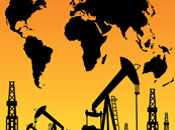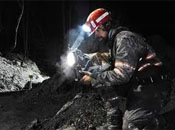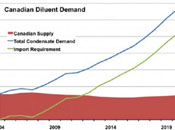
As the article explains, U.S. oil production is now on pace to surpass Saudi Arabia by 2020. This would make the United States world's largest oil producer. We're already the second-largest natural gas producer, according to 2010 EIA estimates.
It's all thanks to the U.S. shale boom that has unlocked billions of barrels of oil and trillions of feet of natural gas from the Appalachian Mountains to the Pacific Coast, from the Bakken in North Dakota to the shale fields of southern Texas.
But all of this fracking has caused some serious economic and environmental problems.
And while I greatly advocate increased drilling and domestic production, we still must address a wide-range of problems now plaguing the shale oil and gas sectors.
After all - with apologies to Voltaire and Spiderman - with such great fortune comes greater responsibility.
That's why I am in the third day of what has become a very interesting conference here in Pittsburgh. It was convened to set the agenda moving forward to deal with the almost invisible aspects of shale oil and gas drilling.
In fact, for the first time, the conference's primary focus will be on the negatives caused by the drilling.
We also have questions surrounding the amount of water required to frack these formations (the process needs a lot of water to break open rock and release hydrocarbons), as well as the ongoing public health fears from the chemicals used.
Now, we are seeing parallel economic problems as well.
In the Marcellus basin, researchers are now recording some of these shortcomings and placing them in four basic categories.
The real concern is that these four problems - in infrastructure, labor, local inflation, and the environment - will remain well after the drilling (and the revenue) has moved on.
So before you decide to declare "energy independence", take a look at some of the downside that may come along with it.
1. Infrastructure Damage Continues to Accelerate.
The constant movement in water trucks and equipment has caused widespread destruction to roads, bridges, and access routes. In Pennsylvania, localities have responded by introducing "impact fees," which are paid by operating companies to offset the damage.
Yet, the payments have to be divided among locations where drilling takes place, those affected but receiving no direct largess from the gas extraction, townships, counties, with a portion left over for statewide conservation, environmental, and state land maintenance issues.
It is too early to determine the result. The low volume of wells due to poor natural gas market prices (until recently) has depressed the anticipated drilling, making estimates difficult. Nonetheless, we do know from earlier experience in the Barnett basin of Texas that, once the drilling picks up, such fee payments are likely to trail behind the destruction.
The damage, in other words, occurs quicker than the funding to fix it.
2. Labor Dislocation Has Become Visible
As the emphasis is placed upon drilling, employment gravitates to the job openings.This is perfectly natural, in an economy were so many are unemployed or underemployed.
But the short-term emphasis on gas production in each locality throws training and educational programs into imbalance, as well. With the average well producing most of its gas in the first 18 months, and only a finite number of pads (each housing several wells) possible before a company moves on, the emphasis to make new jobs available in these communities only makes the aftermath of drilling that much more difficult to face.
3. Local Inflation Punishes Residents
All eyes have been on the money pouring in and the potential for employment from the drilling.
But as shale gas and oil progressively come to dominate domestic production, a "boom and bust" cycle has developed in the towns surrounded by the shale basins. Simply put, the injections of short-term money are introducing a range of problems for local communities.
Local inflation is rising due to dual pressures.
On the one hand, as so much money pours into confined areas in a short period of time, prices rise quickly for everything from housing and basic services to menu items at the corner diner.
On the other hand, dual usage equipment, materials, and supplies - both needed at the wellheads and having a separate demand in non-gas producing segments of the market - increase in price. Supplies are not sufficient. Competition jacks up the cost.
The worst position to be in when both of these hit is living on a fixed income.
It's no surprise residents of these areas are increasingly relying on public programs. And there are no additional local funds to provide them.
4. Environmental Problems Continue to Mount
Finally, the most disquieting downside is one whose price tag can't be determined yet.
Pennsylvania alone has more than 400,000 plugged wells and many more closed coalmines. Most were discontinued some time ago, but there is a double whammy here. Many were capped or sealed poorly. It is difficult even to determine their locations.
As shale gas extractions become more endemic, environmental cleanup expenses are rising as a result of increasing run off, drainage, and spills from much older locations.
These problems are not coming from the drilling projects themselves. They were caused by earlier problems... and are now being released again by fracking.
What Lies Ahead
The costs from these four problems, and a number of others, are not presently factored into any of the analyses done on shale gas impact. That always becomes a ready recipe for economic disappointment.
We need to develop a balanced view of the economic potential and impact. Otherwise, policy approaches to rectify the situation are hardly possible. That is not possible until we have a clearer view of the downside from drilling.
One other consideration to keep in mind is this. By clarifying the downside, we are able to focus on remedies.
And those usually produce new investment opportunities.
Kent Moors
Oil & Energy Investor























































